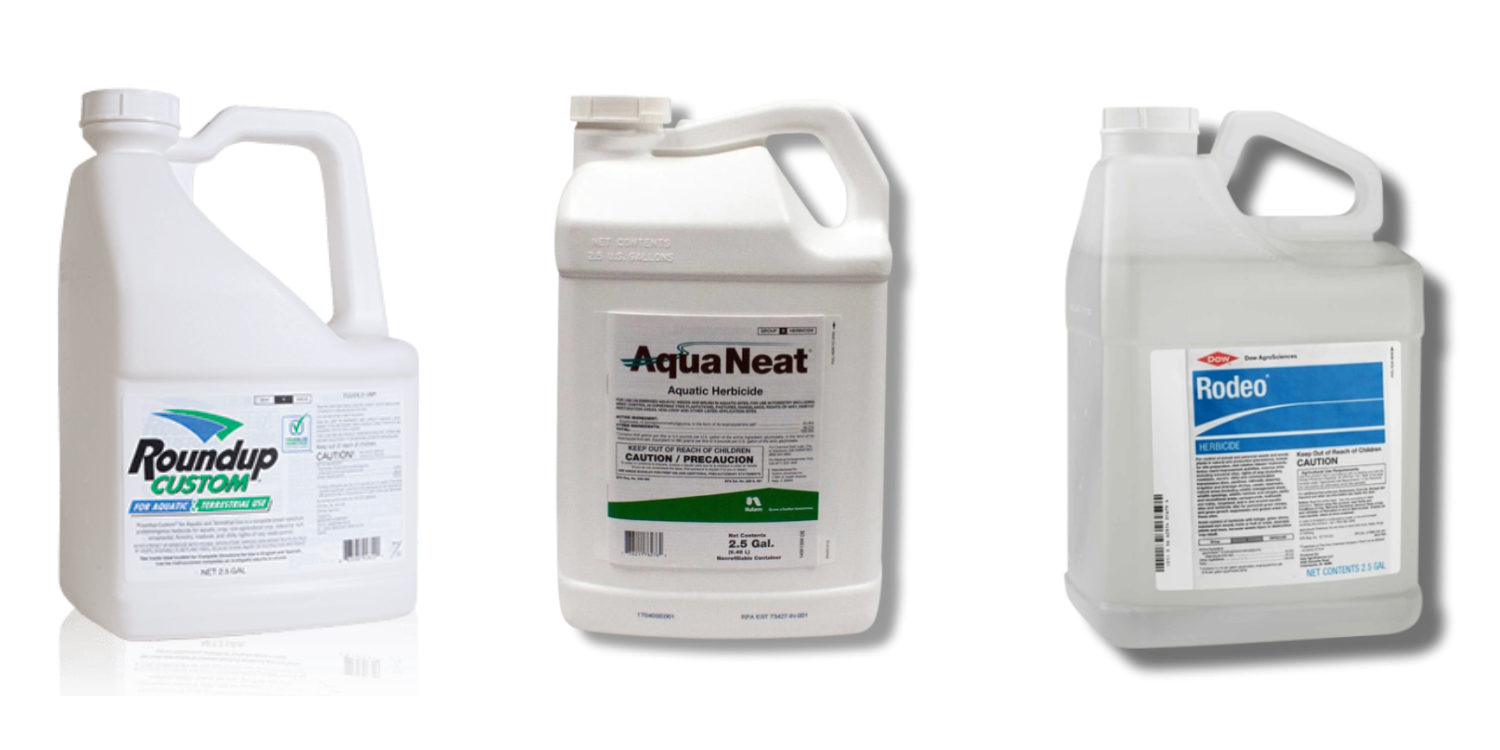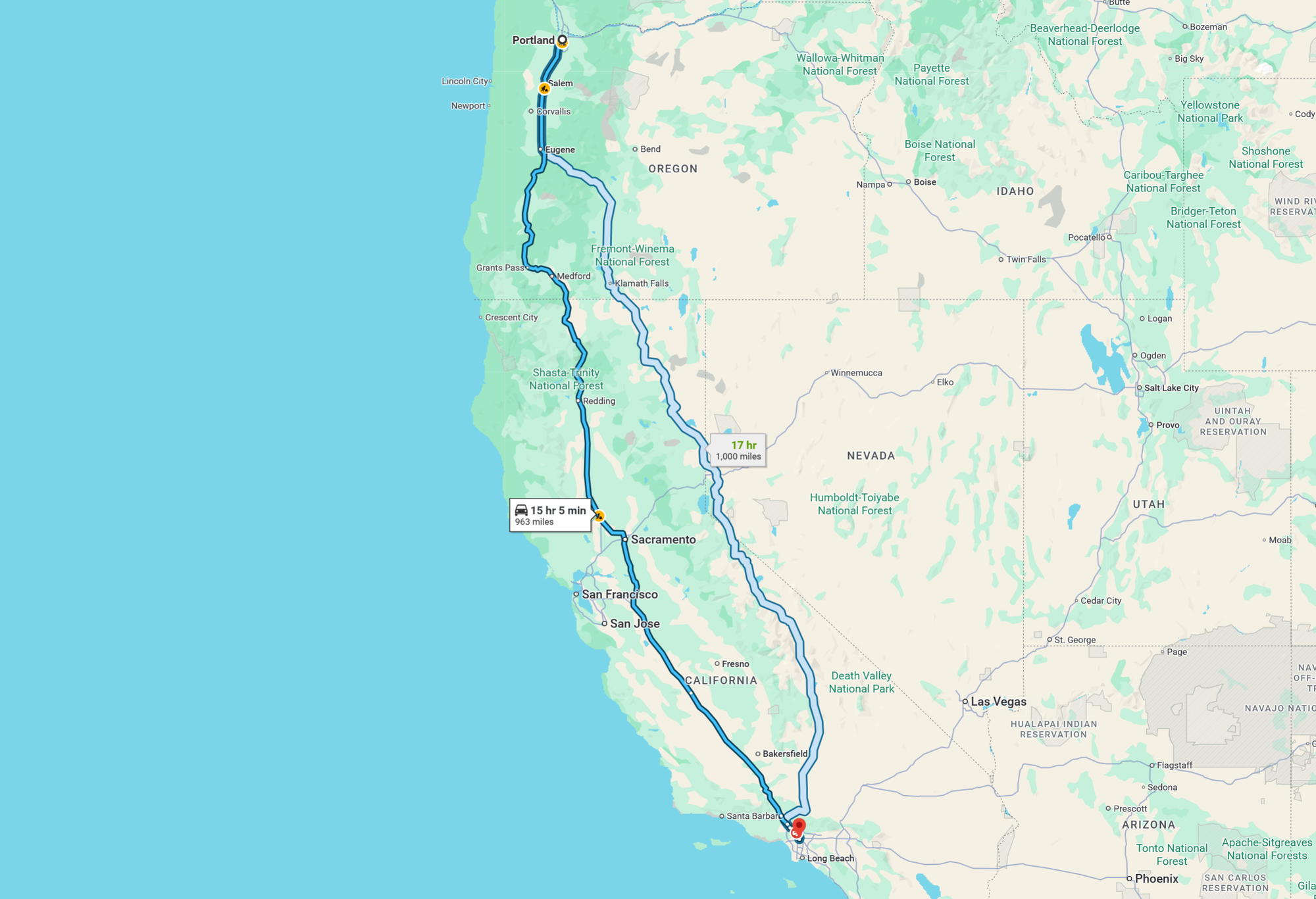The Embodied Carbon Emissions of Herbicide

Herbicide is often described in terms of what it does: kill weeds. However, we don't often consider what it is: a refined petroleum product.
Pouring glyphosate into a backpack sprayer doesn't quite feel like pouring gasoline or oil and spraying out petroleum into a natural area. That's probably because spraying herbicide and killing weeds often feels like we're doing something good for wildlife habitat. In reality, we're spraying something closely related to gas and diesel, with their associated consequences for wildlife harm and environmental pollution.

Making a 2.5 gallon container of glyphosate like RoundUp or Aquaneat starts with crude petroleum, just like gas, diesel and oil. However, the amount of chemical refining that is required to create glyphosate and other herbicides is much more intensive. Here are some of the steps for the refining process:
- Crude petroleum refining
- Basic chemical production: Ethylene and Propylene, Methanol, Benzene, Acetic Acids, etc.
- Intermediate chemical production: Iminodiacetic Acid (IDA), Glycine, Formaldehyde.
- Glyphosate Synthesis: Glycine or IDA reacted with Formaldehyde and phosphorous compounds to make crude glyphosate.
- Purification: the crude glyphosate active ingredient is subjected to extensive purification processes like crystallization, filtration, and drying to remove unreacted materials, catalysts, solvents, and undesirable by-products.
- Formulation: The highly purified technical-grade glyphosate is then blended with various "inert" ingredients (surfactants, anti-foaming agents, etc.), many of which are also derived from petroleum or natural gas, to create the final commercial product.
Each of these steps is carbon intensive with various amounts of waste and toxic by-products that are incinerated or landfilled. By evaluating the entire refinement process, we can understand a total carbon footprint for each 2.5 gallon container of glyphosate.
According to a 2009 study, each kilogram of purified glyphosate represents the equivalent of 31.29 kg of CO2 emissions that were used to create it. So here is one estimate for Aquaneat and RoundUp Custom with 53.8% active ingredients:
- Volume: 2.5 gallons
- Weight of Product: 2.5 gallons * 10.8 lbs/gallon = 27 lbs
- Weight of Active Ingredient (AI): 27 lbs * 0.538 (53.8% AI) = 14.53 lbs AI
- Convert to Kilograms: 14.53 lbs * 0.453592 kg/lb = 6.59 kg AI
- Total CO2 Active Ingredient: 6.59 kg AI * 31.29 kg CO2e/kg AI = ~206 kg CO2
- Total CO2 Inert Ingredient: estimated ~60 kg CO2
Therefore, the manufacturing process for a 2.5-gallon bottle of Aquaneat or RoundUp Custom may be estimated to produce around 266 kilograms of CO2 emissions. This is roughly the same emissions produced by burning 30 gallons of gas or driving 900 miles from Portland, Oregon to San Francisco in the average passenger car.
Manufacturing one 2.5 gallon container of glyphosate produces roughly the same emissions as burning 30 gallons of gas or driving 900 miles from Portland, Oregon to Los Angeles in the average passenger car.

In addition to emissions from the petroleum refining and chemical manufacturing process, there are also emissions from packaging, transporting, and applying herbicide products. The herbicide chemical itself degrades and produces carbon emissions in the soil over time. And soil degradation from herbicide effects, including the loss of soil biology, organic matter and carbon sequestration leads to more emissions in the environment.
So, when we spray herbicide, how should we think about the embodied carbon emissions of our habitat restoration projects? We might start by considering what herbicide is: a petroleum product. And make sure that we're using it responsibly so that the total embodied emissions of a habitat restoration project don't negate the positive benefits we're having in the landscape.
Sources:
"Estimation of the greenhouse gas emissions from agricultural pesticide manufacture and use" Audrey, et al (2009)
